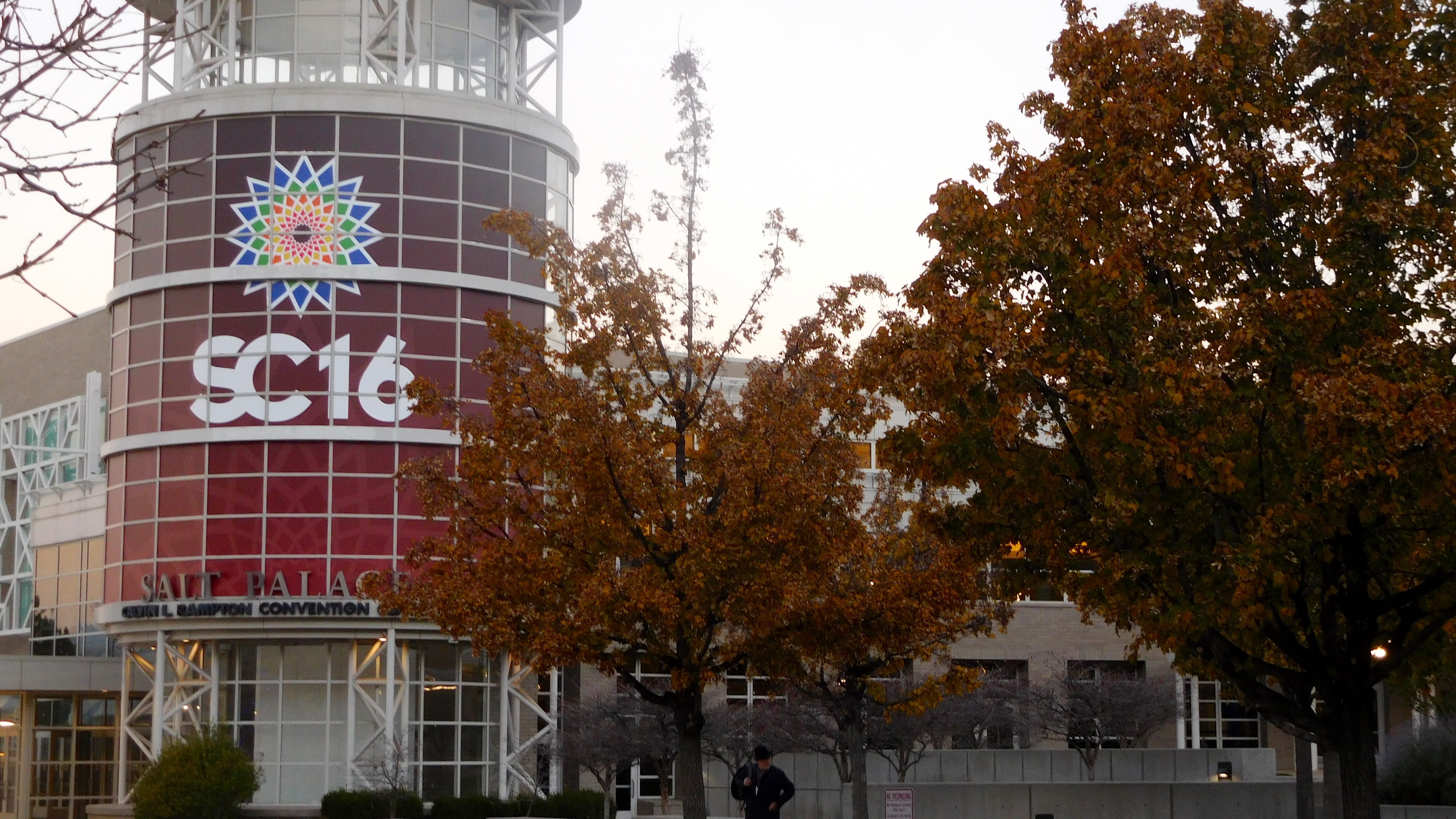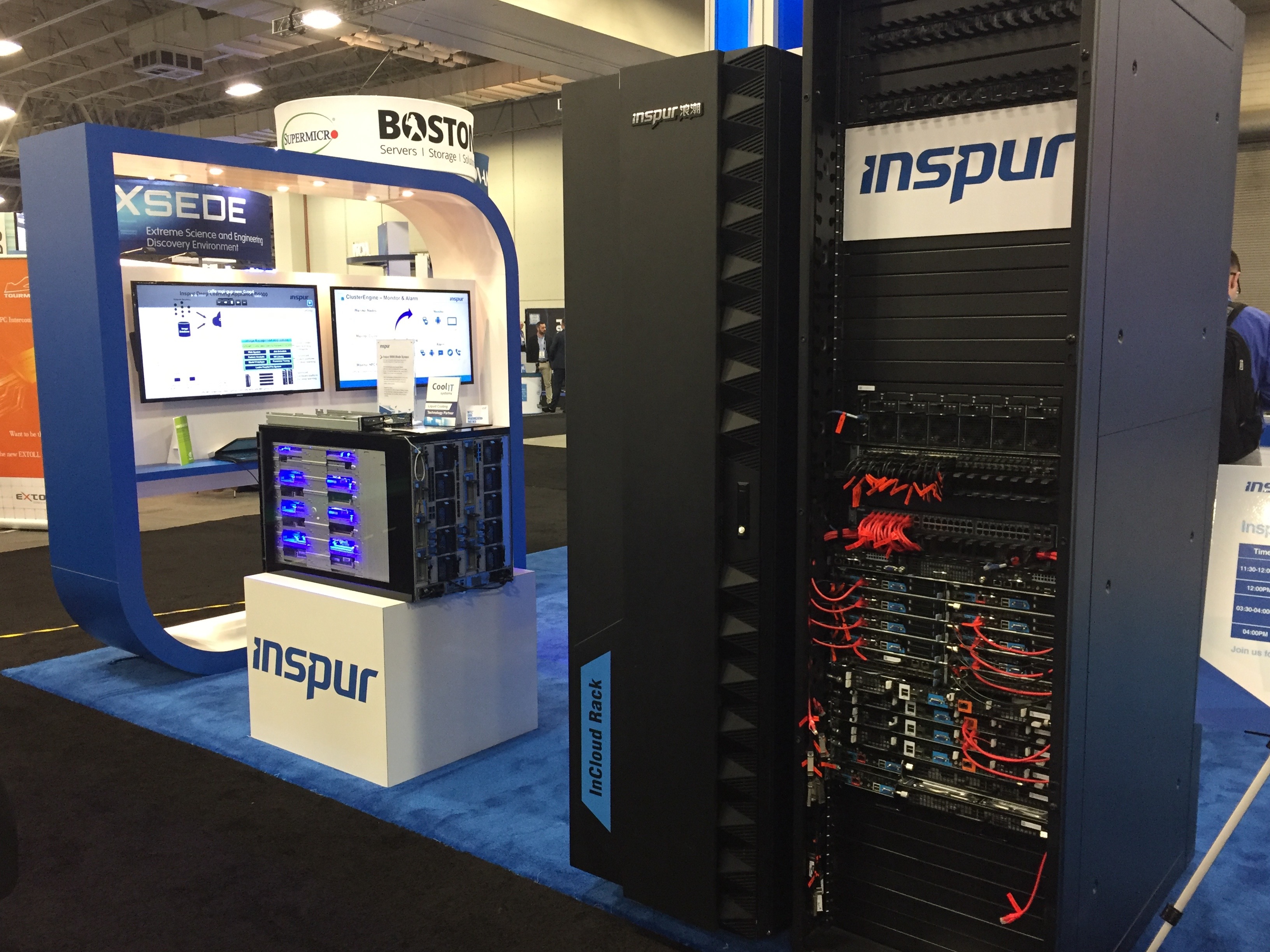Difference between revisions of "Super Computing 2016"
| Line 3: | Line 3: | ||
<br /> | <br /> | ||
<center> | <center> | ||
| − | [[Image:SC16.jpg|350px]] [[Image:Tabernacle.jpg|350px]] | + | [[Image:SC16.jpg|350px]] [[Image:Tabernacle.jpg|350px]] [[Image:SaltLakeCityMountains.jpg|350px]] |
</center> | </center> | ||
<br /> | <br /> | ||
Revision as of 09:34, 16 November 2016
--D. Thiebaut (talk) 10:39, 14 November 2016 (EST)
I attended the SuperComputer 2016 (SC16) conference in Salt Lake City, UT, in Nov. 2016. The conference deals with all issues relating to supercomputing, high performance computing (HPC), and any domain where massive orders or computation are required.
Parallel Processing Tutorial
I attended a 1-day tutorial on parallel processing. I knew 95% of the material, but this actually was a great way of reviewing the material I will teach in my parallel and distributed processing class CSC352 in the spring of 2017, and see what I needed to drop or add to the course. The tutorial was presented by Quentin F. Stout and Christiane Jablonowski of U. Michigan. I was happy to see that my current syllabus is quite up to speed with what is important to the field, and I just need to revise it by adding a new section on GPUs and accelerators. GPUs will likely become one of the biggest players in parallel computing in the next few years from their use in machine learning and deep learning in particular, and running neural network operations. NVidia seems to be the company at the head of the game, with Intel's Xeon Phi a competitor in HPC and machine learning. C and C++ are still the languages of choice, and I will keep my module on teaching C & C++ (maybe not C++ classes) in the seminar.
In case you'd like to know the contents of the tutorial, here it is in its entirety, as a word cloud... :-)
EduHPC 16
There is also an afternoon session relating to eduction of HPC in undergraduate schools, and I was on the technical committee for this session (Monday 11/14/16).
Random Thoughts
I attended several talks, plenary and research, and am listing some of the main ideas here, mostly to help myself remember them. There is no special order or categorization.
- There's a lot of hardware on the exhibitors floor! When I went to the Amazon AWS conference in New York City, the exhibitors were mostly service companies offering software applications that operated on top of AWS. Here, many companies provide hardware platforms on top of GPUs to support all kind of HPC apps, including machine learning.
- GPUs are here to stay. They are power hungry, but they are perfectly suited for matrix operations, which is what neural nets are all about. Not surprising that Google is manufacturing its own GPU boards/servers (Tensor Processing Units--TPU) to support its machine learning research.
- For the first time this year, SC16 included panels and workshop dedicated to the retention of minorities in HPC, and to K-12, 8-12 education. The current percentage of women in HPC is around 20%. Our CS department at Smith is now in its third year of a grant from the AAC&U (PKal/TIDES grant) to enhance the retention of underrepresented students in computer science).
- I attended a talk "Simulation and Performance Analysis of the ECMWF Tape Library System," by Markus Mäsker et al, from the Johannes Gutenberg University of Mainz, Germany, on the performance of a tape library where a robot feeds tapes to a finite collection of drives (12). Using traces of the accesses the robots make to tapes, the authors evaluated various policies for speeding up the access to tape, hence reducing the long latency in accessing files. More than 20 years ago I was doing the same kind of research, but the traces were traces of processors accessing memory, and the algorithms I was looking at were to best bring information into cache memory. It seems that as technology progresses, lessons learned can be applied to new levels of memory hierarchy. In particular, I'm wondering if some machine learning couldn't help reduce the latency by analyzing passed requests, and predicting future ones, in an effort to bring a tape in a drive before it is actually requested.
Super Moon
An important detail: my week in Salt Lake City coincided with the super moon (super moon for super computing conference--that makes sense!), the biggest and brightest supermoon to rise in almost 69 years. So I had to document this! You can see some more of it on my instagram feed.





